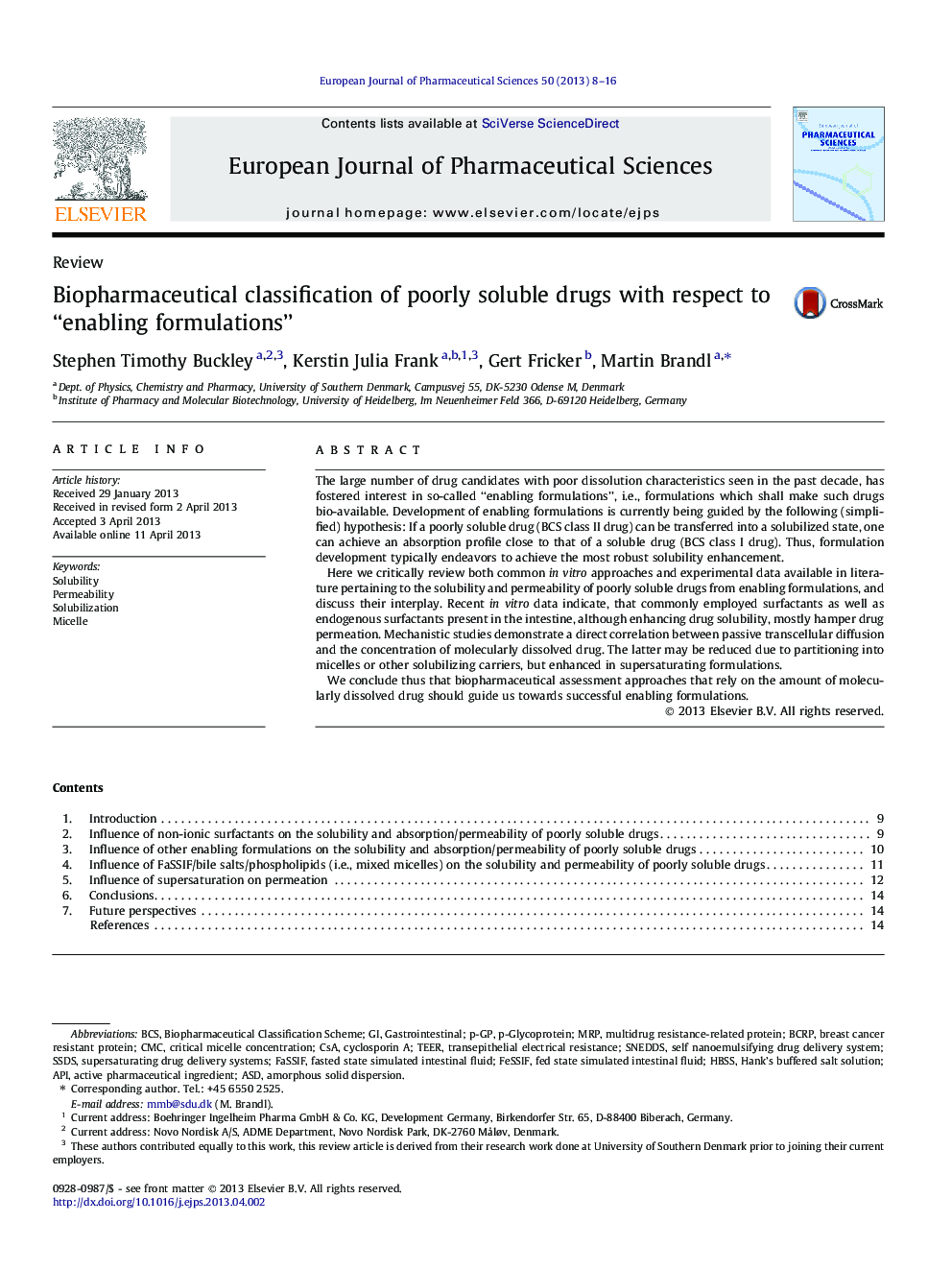| Article ID | Journal | Published Year | Pages | File Type |
|---|---|---|---|---|
| 2480682 | European Journal of Pharmaceutical Sciences | 2013 | 9 Pages |
The large number of drug candidates with poor dissolution characteristics seen in the past decade, has fostered interest in so-called “enabling formulations”, i.e., formulations which shall make such drugs bio-available. Development of enabling formulations is currently being guided by the following (simplified) hypothesis: If a poorly soluble drug (BCS class II drug) can be transferred into a solubilized state, one can achieve an absorption profile close to that of a soluble drug (BCS class I drug). Thus, formulation development typically endeavors to achieve the most robust solubility enhancement.Here we critically review both common in vitro approaches and experimental data available in literature pertaining to the solubility and permeability of poorly soluble drugs from enabling formulations, and discuss their interplay. Recent in vitro data indicate, that commonly employed surfactants as well as endogenous surfactants present in the intestine, although enhancing drug solubility, mostly hamper drug permeation. Mechanistic studies demonstrate a direct correlation between passive transcellular diffusion and the concentration of molecularly dissolved drug. The latter may be reduced due to partitioning into micelles or other solubilizing carriers, but enhanced in supersaturating formulations.We conclude thus that biopharmaceutical assessment approaches that rely on the amount of molecularly dissolved drug should guide us towards successful enabling formulations.
Graphical abstractFigure optionsDownload full-size imageDownload high-quality image (164 K)Download as PowerPoint slide
